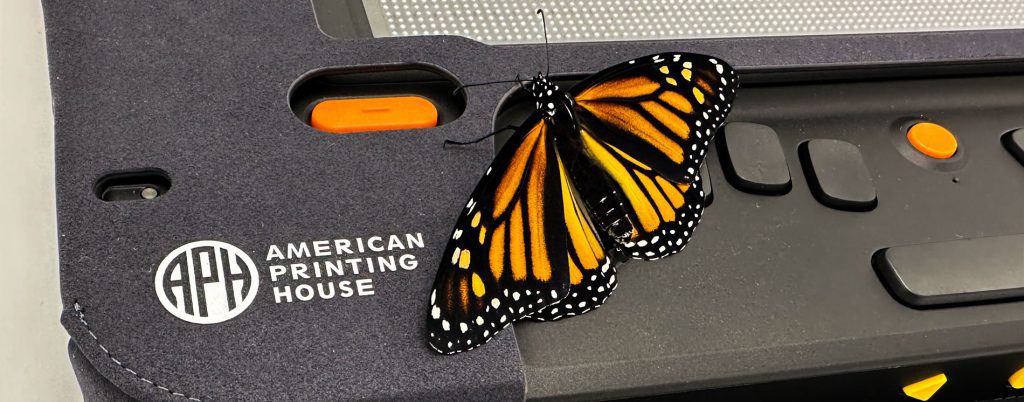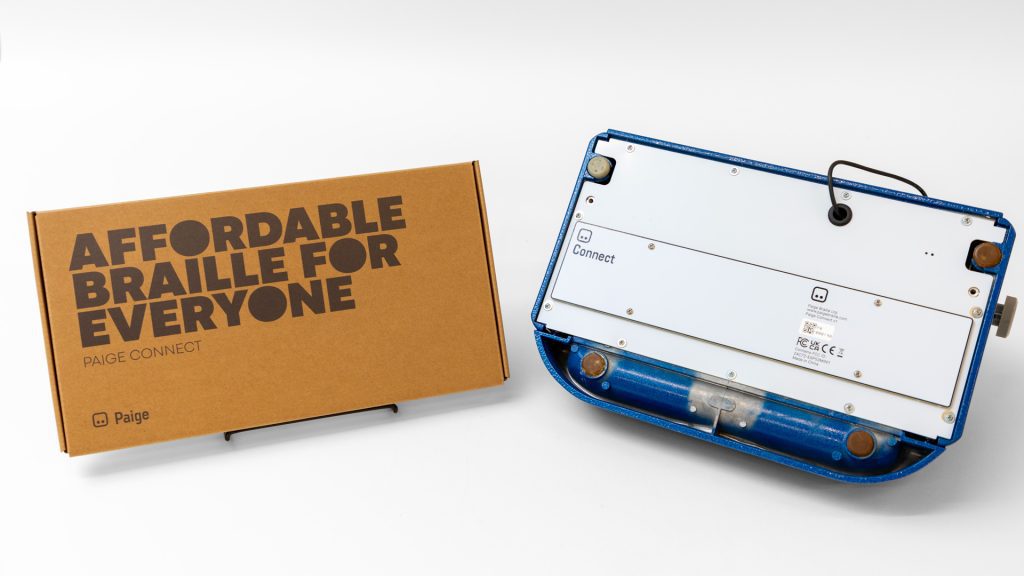To ensure your items arrive in time for the holidays, please place all orders using Free Matter shipping by Saturday, November 29 or by 12pm on Thursday, December 18 for UPS or USPS Priority shipping. School orders will be held after Monday, December 15 through the end of the year.
CloseCommemorating Guide Dog Day with Guide Dogs for the Blind

International Guide Dog Day is celebrated each year to mark the establishment of the International Federation of Guide Dog Associations in 1989. This day provides an opportunity to not only celebrate the hard work and dedication of guide dogs but also raise awareness of the importance of guide dog services.
About Guide Dogs for the Blind
Guide Dogs for the Blind is a non-profit school for guide dogs that supports the blindness and low vision community. Their dedication to guide dogs, orientation and mobility, and care for the people they serve is what makes APH proud to celebrate their work on this International Guide Dog Day! Guide Dogs for the Blind began 83 years ago in 1942. Thanks to private donors and their extensive volunteer network, Guide Dogs for the Blind can provide all of their services free of charge. “We don’t want anyone not to have a guide dog just because of financial strain. We cannot do what we do without our volunteers,” said Jane Flower, the Youth Outreach Specialist at Guide Dogs for the Blind.
Around 300 teams, each made up of a guide dog and their new owner, graduate from Guide Dogs for the Blind each year but the first piece of their success comes from the dogs themselves. The organization does all of its own breeding, specifically Golden Retrievers, Labradors, and a cross between the two. Every year 800 puppies are born and prepped from the moment of birth to follow the path to becoming a guide dog. The puppies spend the next year or two of their lives with volunteer puppy raisers, experiencing new sights, sounds, and environments. “We want to expose them to anything and everything they could experience, so that nothing would phase them when they are out working,” said Jane. “Our dogs are pretty much bullet proof.”
Programs
Guide Dogs for the Blind offers three programs for anyone seeking their services.
Orientation and Mobility Immersion Program
This is for anyone who may be interested in improving their O&M skills, seeking a guide dog, or is interested in learning about O&M for the first time. Participants meet with a one-on-one O&M specialist during this weeklong training to work towards understanding the space around them and improving non-tactile travel skills.
Guide Dog Program
The Guide Dog program does more than just pair individuals who are blind or low vision with a guide dog, it ensures that both person and pup are set up for success. In applying for this program, Guide Dogs for the Blind ensures that all applicants spend at least 80% of their time using a cane and have at least 3 independent routes of up to a mile in length that they are walking on a regular basis. Each of these requirements show both a need for a guide dog, as well as ensure that the dog will have plenty to do. “Dogs need purposeful and meaningful work,” said Jane. Once the applicants have been accepted, they begin working closely with trainers to find their canine pair.
K-9 Buddy Program
Of the 800 yearly puppies, only about half make it to guide dog training. With K-9 Buddies, people who are blind or low vision that desire companionship but don’t quite meet the requirements for a guide dog can still receive a dog that is trained well and ready to be a part of their home. To qualify for this program, applicants do need to be legally blind.
Care and Services
With Guide Dogs for the Blind, participants in any one of these programs receive extensive follow-up with professionals to ensure a smooth transition. The organization also offers a support center with an on-call vet, mobility instructors, and financial assistance for the life of the dog, even if the dog has retired.
If you think a guide dog, or any of these services may be for you, applications can be found on the Guide Dogs for the Blind website. “I really encourage people to do their research. Getting a guide dog is a choice, and one size does not fit all,” said Jane. “Your dog is not responsible for your orientation; your dog is responsible for your safety getting from point a to point b.”
To learn even more, check out the Careers & Canine Connections partnership event between Guide Dogs for the Blind and the APH Connect Center, coming again in summer of 2025!
Share this article.
Related articles

Barrier Breaking with Accessible Partnerships on Multiline Braille Displays
APH, HumanWare, Vispero, and the JAWS screen reader, are teaming up to break barriers with a new program for multi-line...

Bring New Life to Your Braille Writer with Paige Connect
An innovative way to turn your traditional braille writer into so much more, Paige Connect is a physical board with...

Braille Tales Arrives in Puerto Rico
APH is a firm believer that early exposure to reading develops crucial braille awareness skills and promotes enthusiasm for literacy....
